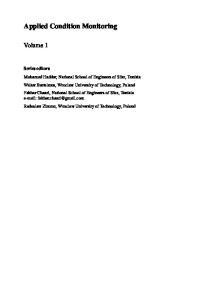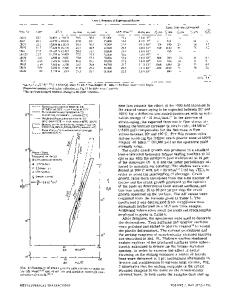Fatigue crack growth through
- PDF / 5,835,532 Bytes
- 20 Pages / 597 x 774 pts Page_size
- 3 Downloads / 487 Views
I.
INTRODUCTION
THE mechanisms and micromechanics of fatigue crack growth at ambient temperature through two a + /3 titanium alloys, Ti-6A1-4V (RA) Ij] and CORONA-5, t2j and two a2 + / 3 titanium aluminide alloys, Super Alpha 2, ~3~ and Ti-14A1-21Nb, have been examined and compared.I4] The mechanisms of fatigue crack growth through these alloys were typified more by their similarity than by their differences. In all cases, crack growth near threshold required a large number of cycles (AN) before the crack advanced (Aa). The sequence of events accompanying crack extension was observed to be similar to those found for aluminum alloys; a sharp crack blunted as the number of cycles increased, followed by crack extension and resharpening. For the a + /3 alloys, slip lines were observed to form at the crack tip during the blunting process and crack advance occurred by breakdown of this slip line. For the a2 + /3 alloy Ti-14A121Nb, crack blunting was observed also, but often an a2 particle dispersed in the/3 matrix broke near the crack tip, and crack advance occurred by linking of the broken particle with the main crack tip. All the alloys examined to date have consisted of approximately equiaxed a or a2 phases with varying amounts of/3 phase in the microstructure. This article reports on fatigue crack growth through titanium alloys with a fundamentally different microstructure: a TiAl-based alloy having a mixture of a2 + 3/phases. The nominal composition of the alloy tested was Ti-47A1-0.9Cr-0.8V-2.6Nb (in atomic percent). Processing resulted in a microstructure of a2 + 3/lamellae with some small regions of equiaxed 3'. Dissolved oxygen was measured as 700 ppm (weight). This alloy composition with a lamellar microstructure has demonstrated enhanced ductility and toughness over other microstructures. 15'61The research reported here is the result of a detailed investigation of fatigue crack growth at 25 ~ and 800 ~ D.L. DAVIDSON and J.B. CAMPBELL are with the Southwest Research Institute, San Antonio, TX 78228. Manuscript submitted November 21, 1991. METALLURGICAL TRANSACTIONS A
II.
MATERIAL AND MICROSTRUCTURE
The microstructure of this alloy, supplied by Dr. Kim of the Metcut Materials Research Group at Wright Patterson Air Force Base, is complex and must be described on several scales. Large, approximately equiaxed regions, which appear to be grains, are visible to the unaided eye on etched samples, as seen in Figure l(a). This photograph shows the entire width of one of the specimens used in mechanical evaluation and indicates that the specimen thickness was approximately 4 grains. In Figure l(b), these "grains" were identified as colonies of lamellae. Average size of the colonies was about 1.2 mm. When a mixed acid etch was used, Isj some of these platelets etched and some did not, as seen in Figure l(c). Transmission electron microscopy (TEM) (Figure l(d)) revealed a structure consisting of many wide and narrow lamellae. From the alloy composition and the phase diagram, is] the microstructure should consist of a
Data Loading...











